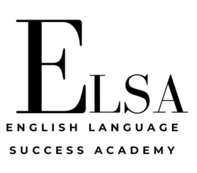The ability to effectively communicate complex ideas through oral presentations is a crucial skill. Whether you’re presenting research findings at a conference, defending a thesis, or giving a lecture, your success hinges on your ability to structure your presentation logically, engage your audience, and handle questions with confidence. This article explores the key elements of delivering impactful academic presentations.
Structuring an Academic Presentation
The foundation of any successful presentation is a well-structured narrative that guides your audience through your content. Here’s a framework to consider:
Introduction: Begin with a hook that captures attention and clearly states your research question or thesis. Provide a brief overview of what you’ll cover, setting expectations for your audience.
Background: Offer context for your research, explaining its relevance and any key concepts or theories that underpin your work.
Methodology: Describe your research approach, data collection methods, and analytical techniques. Be concise but thorough enough to establish the credibility of your findings.
Results: Present your key findings, using visual aids such as graphs, charts, or images to illustrate complex data. Focus on the most significant results that directly address your research question.
Discussion: Interpret your results, explaining their implications and how they contribute to the existing body of knowledge in your field. Address any limitations of your study and suggest areas for future research.
Conclusion: Summarize your main points and restate the significance of your work. End with a strong closing statement that leaves a lasting impression.
Remember to allocate your time wisely across these sections, typically spending more time on results and discussion than on background and methodology.
Techniques for Engaging the Audience
Engagement is key to ensuring your message resonates with your audience. Here are some strategies to keep your listeners attentive and interested:
Use storytelling: Frame your research as a narrative, with a clear beginning, middle, and end. This approach can make complex ideas more accessible and memorable.
Incorporate visuals: Utilize high-quality slides, infographics, or props to illustrate your points. Visual aids can enhance understanding and retention of information.
Practice dynamic delivery: Vary your tone, pace, and volume to maintain interest. Use pauses effectively to allow important points to sink in.
Make eye contact: Connect with your audience by scanning the room and making brief eye contact with individuals. This helps create a sense of engagement and personal connection.
Use rhetorical questions: Pose thought-provoking questions to stimulate critical thinking and keep your audience mentally involved.
Provide real-world examples: Illustrate abstract concepts with concrete examples or case studies that your audience can relate to.
Encourage participation: When appropriate, involve your audience through polls, brief discussions, or interactive demonstrations.
Handling Q&A Sessions and Academic Discussions
The Q&A session following your presentation is a critical opportunity to demonstrate your expertise and engage in scholarly dialogue. Here’s how to navigate this phase effectively:
Prepare in advance: Anticipate potential questions and prepare concise, clear responses. Consider areas of your research that might be controversial or unclear.
Listen carefully: Pay close attention to each question, ensuring you understand it fully before responding. If necessary, ask for clarification.
Stay calm and confident: Maintain a professional demeanor, even if faced with challenging or critical questions. Remember, academic discourse often involves constructive criticism.
Be honest about limitations: If you don’t know the answer to a question, admit it. Offer to follow up later or suggest resources where the answer might be found.
Bridge to your research: When possible, use questions as opportunities to highlight key aspects of your work or to elaborate on points you didn’t have time to cover in your main presentation.
Engage in academic dialogue: View the Q&A as a chance for intellectual exchange. Be open to new perspectives and willing to engage in respectful debate.
Manage time effectively: Keep your responses concise to allow for multiple questions. If a discussion becomes too lengthy or off-topic, politely suggest continuing the conversation after the session.
Elsa Says:
Delivering effective oral presentations in academic settings is a skill that can significantly enhance your scholarly impact. By carefully structuring your content, employing engaging presentation techniques, and skillfully handling Q&A sessions, you can communicate your research with clarity and confidence. Remember, practice is key to improving your presentation skills. Seek opportunities to present your work, solicit feedback, and continually refine your approach. With time and experience, you’ll develop the ability to captivate your audience and contribute meaningfully to academic discourse through your oral presentations.



